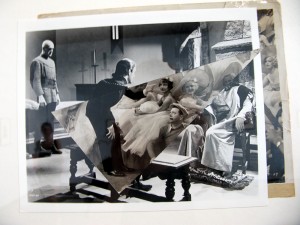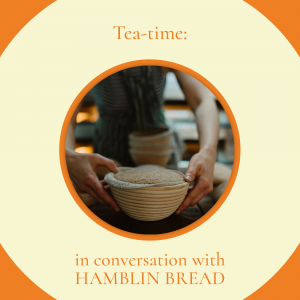
The Embryonic Tale: Hugo, Enjolras and Les Misères
by Ryan Bradley | September 11, 2016
Victor Hugo’s Les Misérables has travelled far from its father’s pen. Eager for material, contemporary culture seems to regularly lead it astray, projecting simplification (or mere fabrication) onto its surface. However, as it rolled from the press in 1862, Hugo’s novel had already strayed from a forerunner – Les Misères, Hugo’s unpolished prototype. An original which precedes the ‘original’, Les Misères deserves to be reintroduced and rescued from obscurity. It offers an alternative take on a familiar tale, mirroring the shifting views of a complicated author.
Indeed, one must begin with that author. So many do not. Victor Hugo, seen above (right) in a seductive and undoubtedly candid photo from 1853, is one of literature’s most notorious self-dramatists. Taken by his second son, this glimpse into the writer’s sojourn in Jersey reveals an early form of his signature pose. Designed to accentuate a bulging brow, a swelling skull barely able to contain the brains within, this affectation crafts a recognisable identity. In short, his brow bears the ‘Hugo brand’– a vendible trademark, assuring pomposity; his prominent forehead, his grandiloquent style, his flirtations with divinity. All combine to suggest an inflated arrogance. Aping the bizarre origins of a classical demigod, even stories of Hugo’s nativity are inflated. By whom? Well, Hugo himself mostly. According to the author, he was conceived in a Roman ‘temple of love’, its ruined pillars marking an intersection between France, Switzerland, and Italy. Here, he alters a tale told in his father’s letters, but the idea remains arresting. It forecasts Victor Hugo’s veneration as a central saint in the Cao Đài religion, an active monotheistic faith established in southern Vietnam in 1926. While practicing spiritualism and dynamic posing in Jersey, Hugo pondered this future legacy as a prophet, hoping to unite European and Eastern mysticism. ‘Saint Victor’ was immodest, but these boastful predictions veil a mind in fluctuation. Hugo’s views changed throughout his life, the cultural phenomenon now known as Les Misérables originating as a different beast entirely.
Announcing a new adaptation for the BBC this year, Andrew Davies described Les Misérables as plagued by “the dreadful memory of the musical”. Although petulant and unprofessional, the criticism contains some truth. Clearly, Les Misérables has drifted from its roots. Since publication in 1862, the novel has spawned numerous films, a brawling game à la Street Fighter, an anime series, and a custom pair of converse shoes (sold on Etsy). Despite its fat, brickish form, the book is often lost in noise. However, if Les Misérables can be lost, its predecessor appears to be buried under concrete. Les Misères, completed in 1848, is the embryonic Les Misérables – the older, patchy sibling, hidden away in the attic. Like their well-known counterparts, the folk of Les Misères have a lot to bawl about, yet they weep for different reasons. Hugo’s student revolt is headed by a fan favourite in the familiar story – the beautiful, steadfast Enjolras, a “priest of the ideal” whose principles initially echo the Reign of Terror. Although disgusted by his own tools (“Death, I make use of thee, but I hate thee”), political violence is still presented as a necessity. Above all, his disdain for monarchy is unbridled. Frequently featured in amateur fiction or fan art, the character encapsulates ‘dead rebel chic’. Popular with Stalin, Ayn Rand and users of the website Tumblr, Enjolras’s orations and their musical equivalents (i.e. ‘Do you hear the people sing?’) have become accessible tools. They are used for every kind of protest imaginable.
In the 1848 precursor, however, the student leader is a very different figure: the less austere, altogether cheerier Courfeyrac. Shockingly, this insurgent has monarchist tendencies, being another “Bonapartist” like Thomas Pontmercy (a prototype for the love-struck Marius, also called Telmau and Julien during composition). Whether this is a case of self-censorship or a true reflection of Hugo’s views is uncertain, but the latter appears more likely. The distinction is an important one, slightly altering the typical view of Hugo as a symbol of revolution. Even in the revised, pro-republican Les Misérables, aspects of Bonapartism do remain. Among other praises, Napoleon is poeticised as a “deep soul masked by marble” in a bloated digression on Waterloo, though he is often derided elsewhere. Read retrospectively, Les Misères helps to highlight this, emphasising the more conservative aspects of Les Misérables. Certainly the cultural history of ‘Les Mis’ would be different had the novel followed Courfeyrac’s royalist revolution. It is unlikely that the character would have held the same appeal as his more developed successor. A shift in Hugo’s personal politics explains this astonishing change, the jump from Courfeyrac to Enjolras reflecting his complicated relationship with a certain family.
As a boy, Hugo was partial to Napoleon. Glossy pinups of the balding Corsican could have adorned the walls of his Paris bedroom. In time, the allure faded, fanaticism giving way to scepticism. Saddened by this, Alfred De Vigny, a conservative friend, bleated that fame would lead his darling Victor to “saucy remarks” and liberalism. True, the rising star grew more irreverent, but his rigidity was not banished overnight by three spirits. Les Misères boasts evidence of this, offering a warm, favorable look at rebels who seem less radical, less developed and more conservative. After all, the barricade’s commander is a Bonapartist, aiming to restore the House of Bonaparte and its centralised state. For the most part, history remembers Hugo as a republican, making this early draft rather surprising. In Cao Đài scripture, the French poet even signs a pact with God alongside Sun Yat-sen, the revolutionary father of the Chinese Republic. This supernatural event is depicted in murals and statues across the Holy See in Tây Ninh, constructed between 1933 and 1955. His fellow saints include William Shakespeare, Joan of Arc, Louis Pasteur, Thomas Jefferson and Vladimir Lenin. The striking presence of someone like Lenin is not only ironic (considering communism’s ban on the faith in Vietnam), it also positions Hugo next to an opponent of absolute monarchy, something he evidently wasn’t in the early days of Les Misères.
Long after Vigny’s complaint, Hugo was elected to Parliament as a conservative. Les Misères dates from this period, its simpler (yet somehow more confusing) revolution reflecting a less disillusioned soul. The draft still features a steely figure called Enjolras, anticipating the anti-monarchist leader of the subsequent text. Here, his gloomy existence seems a foul reminder of France’s bloody past. Executing a trigger-happy ally with little remorse, this Enjolras plays second fiddle to the traditionalist Courfeyrac. His fierce ways are disposed of rather quickly. He dies first during the barricade attack, only to inexplicably reappear in a later scene. As Miracle Max might say, Enjolras is only mostly dead. Sadly, his resurrection is not Les Misères branching off into fantasy or magical realism. Instead, it’s a mere inconsistency – one of many glaring issues which dog the work in progress. In the same section, ‘Thomas’ suddenly becomes ‘Marius’, betraying the evolving nature of the novel that would eventually become Les Misérables.
Between the two versions, names are the most immediate sign of change, but also the most superficial. Greater changes lurk beneath them, mirroring the transition between conservatism and liberality. On a cosmetic level, Valjean is Trejean, Eponine is Palymre and Gavroche is Chavroche. In Les Misérables, Cosette’s nickname (Alouette, ‘The Lark’) is a pun based on her name in the Misères draft, Anna Louet, lingering as a reminder of past efforts. Enjolras and Courfeyrac get to keep their old names, though their politics and personalities are renovated. The latter, formerly a staunch Bonapartist, transforms into the opposite, calling Marius a “reassured rat” for his worship of Napoleon. In the real world, Hugo split from the conservatives in 1849, fleeing France after Napoleon III (the first’s nephew) seized complete power. Faced with real tyranny, the charm of an ‘absolute Bonaparte’ was gone. Chief amongst Napoleon III’s many questionable deeds was the invasion of Vietnam, Hugo’s objection assuring his future role as a major saint of Cao Đài. This Hugo, now angrier and exiled, birthed a more spirited Enjolras, forsaking the monarchist ideals of his youth on the surface.
This Hugo was seen as revolutionary. His bulging brow graced the paper of printed propaganda. He was immortalised on a Soviet Union postage stamp. Indeed, Les Misérables was often appropriated in the same state. Tatyana Lukashevich’s film Gavrosh changes the failed revolution into a glorious success, the antagonist Javert being slain with a medieval broadsword. In the same period, America rewrote the novel into thinly cloaked anti-communist commentary. W.P Lipscomb’s movie recasts the youthful, idealistic Enjolras as an unkempt, mean-spirited drunk who hijacks Marius’ peaceful protest to loot and riot.
On occasion, culture has carried Les Misérables far from itself, but the novel itself wanders too, escaping from its obscure relative – the patchy, inconsistent Les Misères. Weighed down by these inconsistencies, Les Misères may not stand on its own to many. However, both pieces complement each other. The second work rescues the other from obscurity. The first challenges and accentuates the revolutionary nature of its successor, containing a conservatism which haunts the later draft. Sometimes, traces remain in Les Misérables, jarring with the revised politics. At other times, they are eradicated entirely, being replaced by a more intensely liberal strain, and embodied in the passionate character of Enjolras. Brought together, both drafts offer an important testament to the relationship between politics, culture and art.




